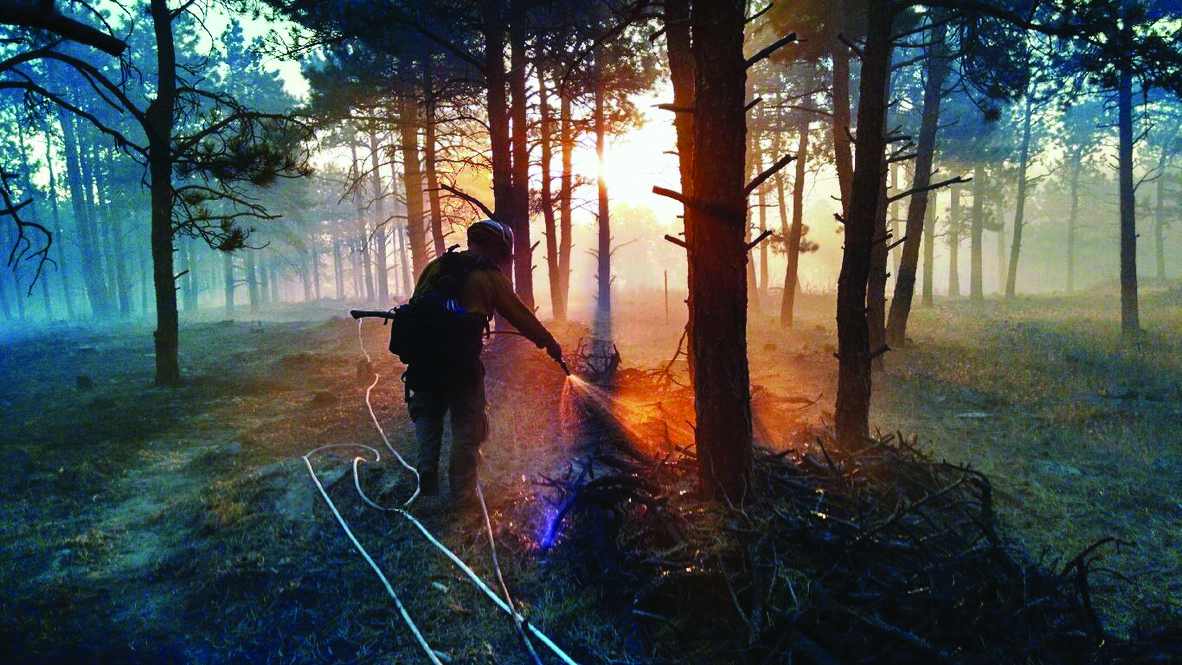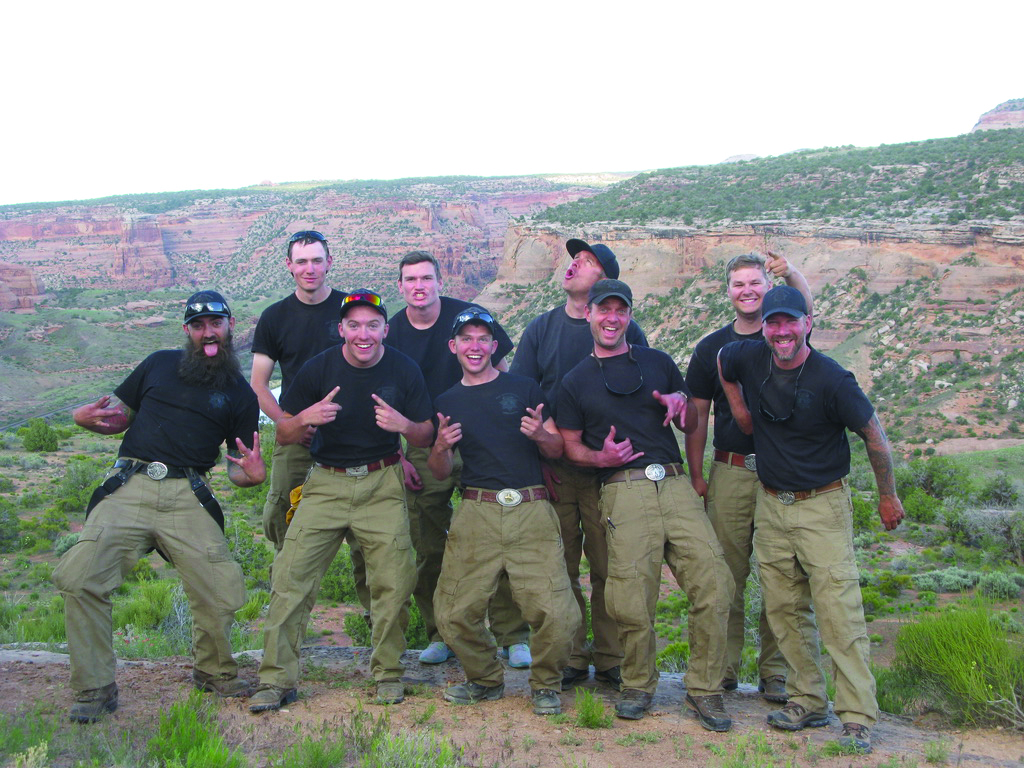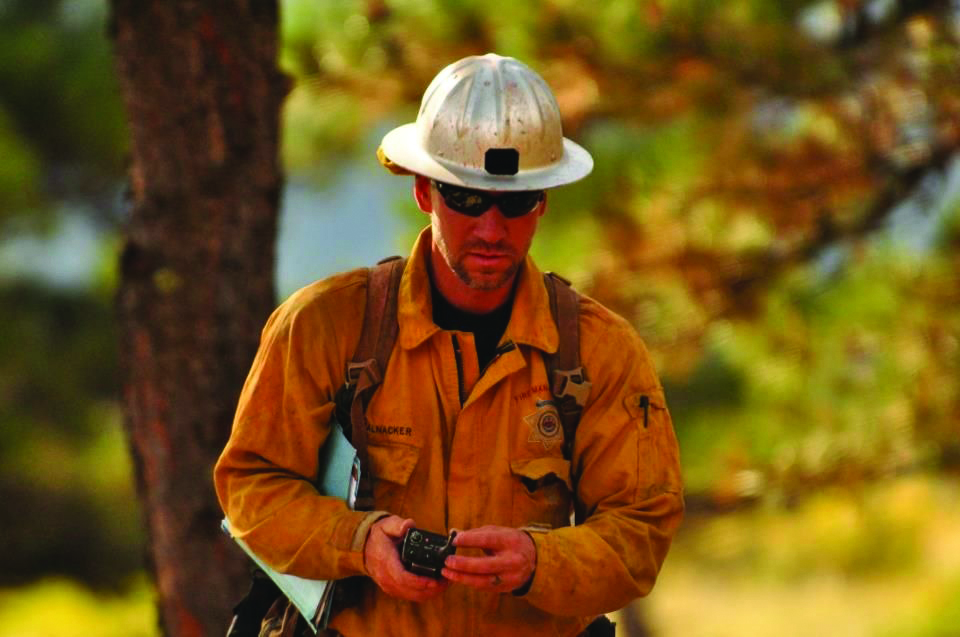Wildfires are changing, and the way we manage them is struggling to keep up.
Aerial firefighting has been at the forefront of firefighting innovation since the 1940s when the first smokejumpers jumped into a wildfire from an airplane in the Nez Perce National Forest. Soon after, the first ever fixed wing air tanker drop happened on the Mendocino National Forest in 1955. Quickly afterwards was the first rotor wing aircraft fire reconnaissance flight and bucket drop. In 1961, the “Hotshot” program was born. At the heart of each of these innovations was a willingness to adapt new approaches, apply new technology, and collaborate across firefighting agencies.
Today, we have larger airplanes and helicopters, more crews and fire engines, and we have introduced remote sensing data for weather forecasting and fire behavior calculations, but on the ground, not much has changed. Our traditional approaches are not keeping up with the changing state of wildfire.

Climate change has made wildfires both more frequent and more intense. There are wildfires in places where it never was, and some would argue never should be; the Arctic and the Amazon are burning at a rate and intensity that will soon be irreversible. The global incidence of extreme wildfires is projected to surge 50 percent by 2100, according to a new report from the U.N.
In fact, these Extreme Wildfire Events (EWEs), which make up 3% of all wildfires and are nearly impossible to suppress, are growing in severity. EWEs account for over 80% of fire-related damages, cost $350 billion annually in the US alone, and are responsible for 340,000 deaths globally every year. They also reduce biodiversity, devastate communities with financial, social and environmental damage, and can cause and worsen respiratory health and aggravate pre-existing conditions like cardiovascular problems.
Fire has been and always will be an important part of healthy ecosystems. Remote “good fire” is an essential part of tree lifecycles and encourages new growth. But our ever-evolving landscape, the expanding of the Wildland Urban Interface (WUI), human impact and climate change are altering this balance and increasing the risk of destructive wildfires for communities worldwide.
With 400+ fires across Canada and smoke producing the worst air quality New York has ever experienced, it’s clear that our current approaches aren’t keeping up. We need to spur innovation for new technology as quickly as possible.
To help accelerate innovation, XPRIZE, the world’s leader in designing and operating large-scale incentive competitions to solve humanity’s grand challenges, recently launched XPRIZE Wildfire, a 4-year global competition that will award $11 million prize funding to teams able to develop and demonstrate fully-autonomous capabilities to detect and extinguish wildfires.
XPRIZE Wildfire incentivizes teams from around the world to innovate across a wide range of technologies in two complementary tracks designed to transform how fires are detected, managed, and fought.
- In the Space-Based Wildfire Detection & Intelligence track, teams will have one minute to accurately detect all fires across a landscape larger than entire states or countries, and 10 minutes to precisely characterize and report data with the least false positives to fire managers on the ground.
- In the Autonomous Wildfire Response track, teams will need to monitor at least 1,000 km2, and autonomously suppress a wildfire within 10 minutes of detection.
- The $1M Lockheed Martin Accurate Detection Intelligence Bonus Prize will be awarded for innovations in accurate and precise detection of wildfires.
As technical lead for XPRIZE Wildfire, I have the opportunity to collaborate with global leaders in fire management to ensure the technologies developed over the course of this competition can make an effective, lasting impact.

Engaging collaboration from government, private industry, nonprofits and communities is our only hope for change and XPRIZE allows for a level of collaboration I have not witnessed before. XPRIZE offers a safe space to host non-political and unbiased discussions with all of these stakeholders working towards a common goal of ending destructive wildfires. The diversity and support of our prize co-title sponsors; Gordon and Betty Moore Foundation and PG&E, our competition presenting sponsor the Minderoo Foundation and the bonus prize sponsor, Lockhead Martin demonstrates a level of collaboration rarely seen. Additionally, prize sponsor, the Conrad N. Hilton Foundation and benefactors, Nichola Elivits and Michael Antonov provide an example of engagement that will ultimately help us solve this complex issue.
Additionally, XPRIZE is currently partnering with nonprofits like the Aspen Institute and The Forest Stewardship Council, public safety agencies like CAL-FIRE and New South Wales-Rural Fire Service, and private corporations like Onshape in support of the competition. By collaborating with these regulatory, public safety, private industry and non-profit organizations we have developed a unified voice for influencing and supporting innovation in technology for change in fire management.
We know that the technology developed through this prize can and will transform the way destructive wildfires are detected, managed, and battled; it will also help firefighters be more proactive rather than reactive. New technology that reduces risk of life will also hopefully help protect the mental health of these brave individuals, saving lives in the line of action and beyond. And we’ll need to collaborate globally to ensure that this life-saving technology can be effective and accessible to make destructive wildfires a thing of the past.

About the Author:
Jay Stalnacker, Technical Leader, XPRIZE Wildfire
Jay Stalnacker has 25 years of experience providing government and private industry health, safety, disaster, and emergency management services. Mr. Stalnacker previously served in non-military government special operations and a member of the elite Federal Smokejumper Program and has served as a commissioned SWAT police officer.
Mr. Stalnacker has served as incident commander and operations chief on numerous emergency and disaster incidents across the nation including 2014 Boulder, Colorado 1,000 year-flood disaster, 2017 State of Oregon Eclipse Emergency Response Event and more recently the 2018 Hurricane Michael natural disaster. Mr. Stalnacker has received two Silver Star medals, one Bronze Star medal and one Medal of Commendation for life saving actions and has been recognized for distinguished service by the Federal Bureau of Investigation, United States Secret Service, Federal Emergency Management Agency, United States Department of Agriculture, the State of Colorado and State of Oregon Emergency Management Offices.
Mr. Stalnacker holds a bachelor’s degree in organizational leadership from Colorado State University. He is a certified health and safety trainer in numerous professional disciplines and considered a subject matter expert for disaster incident management and investigation.
To learn more about X-Prize visit www.xprize.org/wildfire


